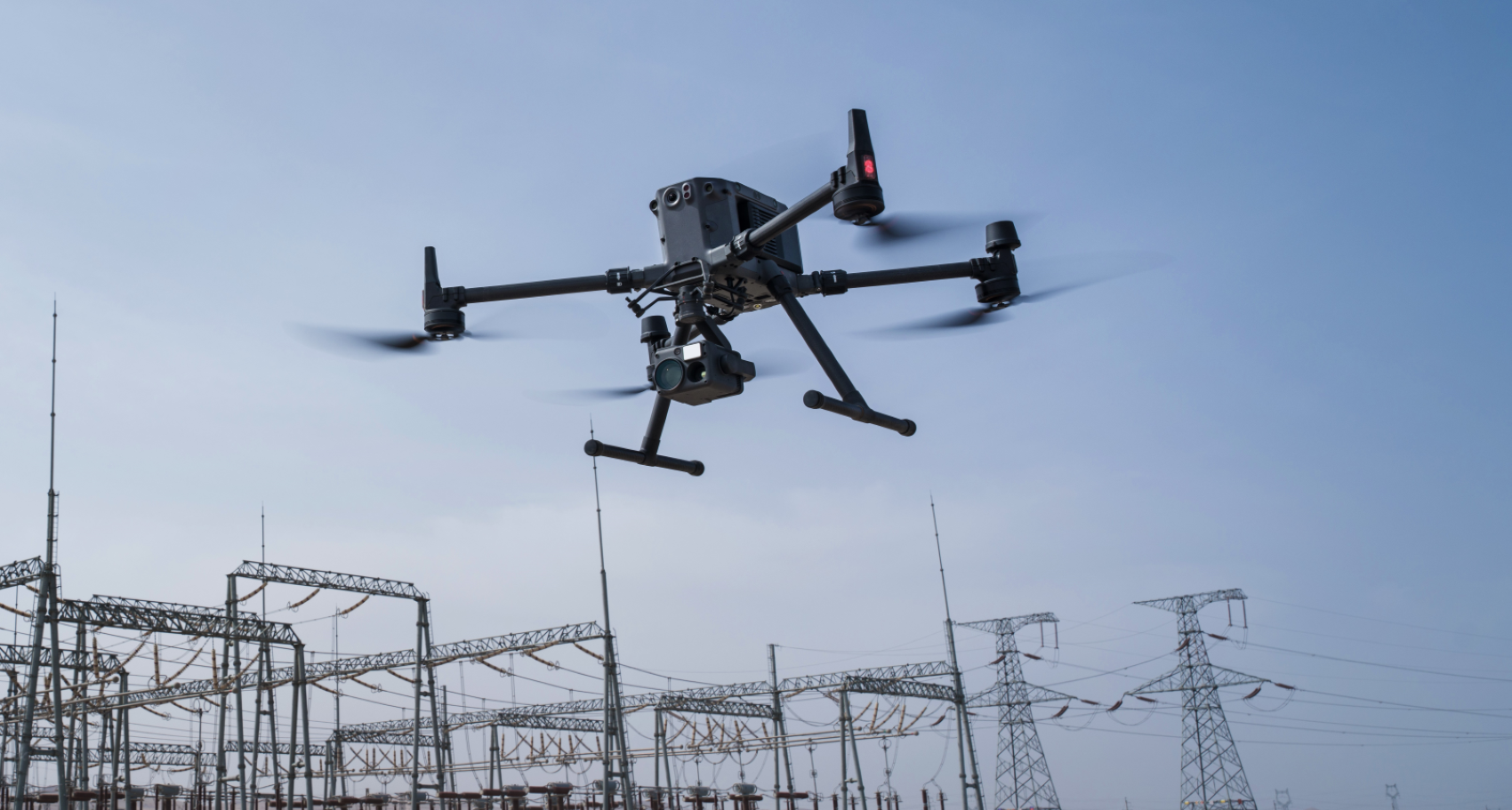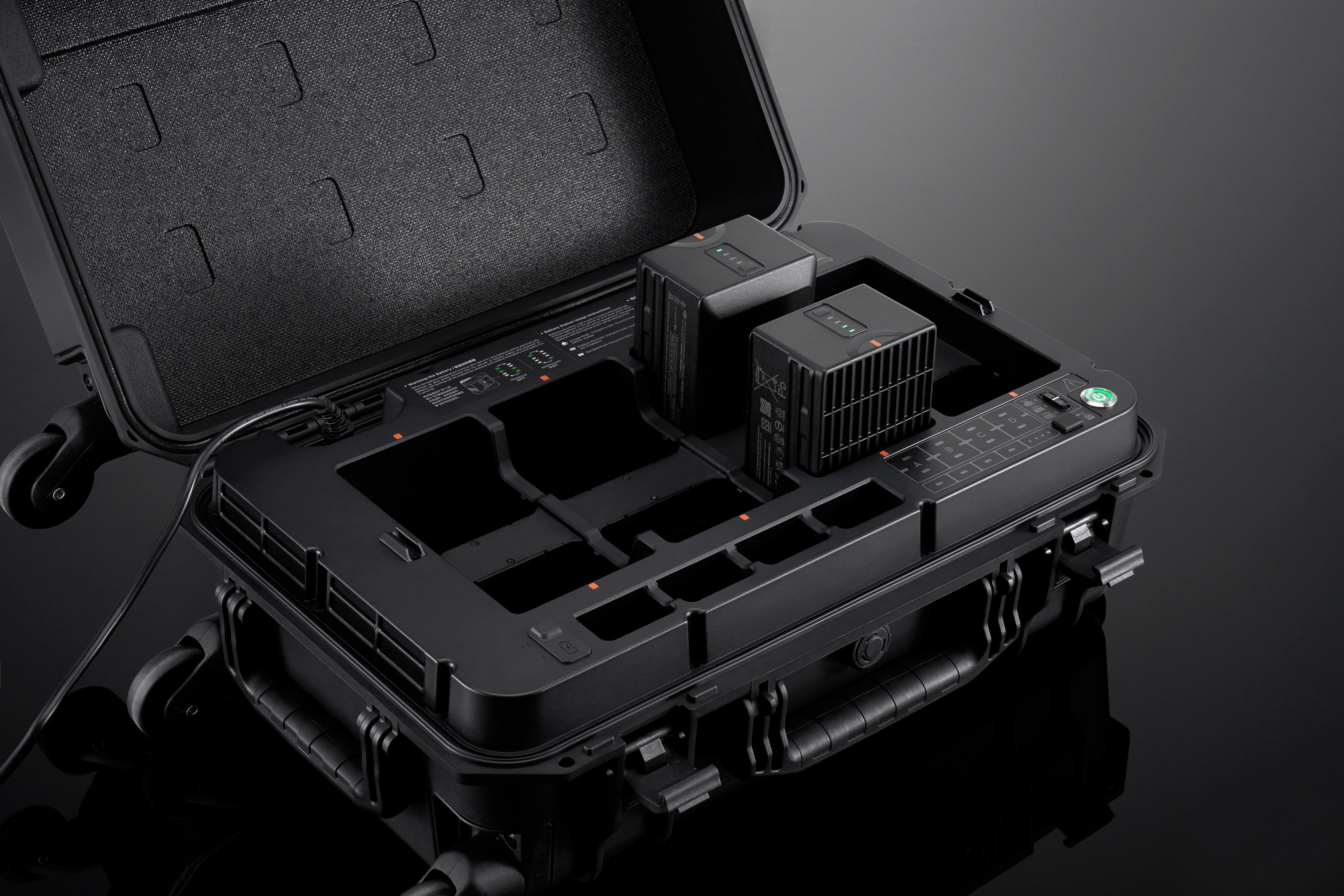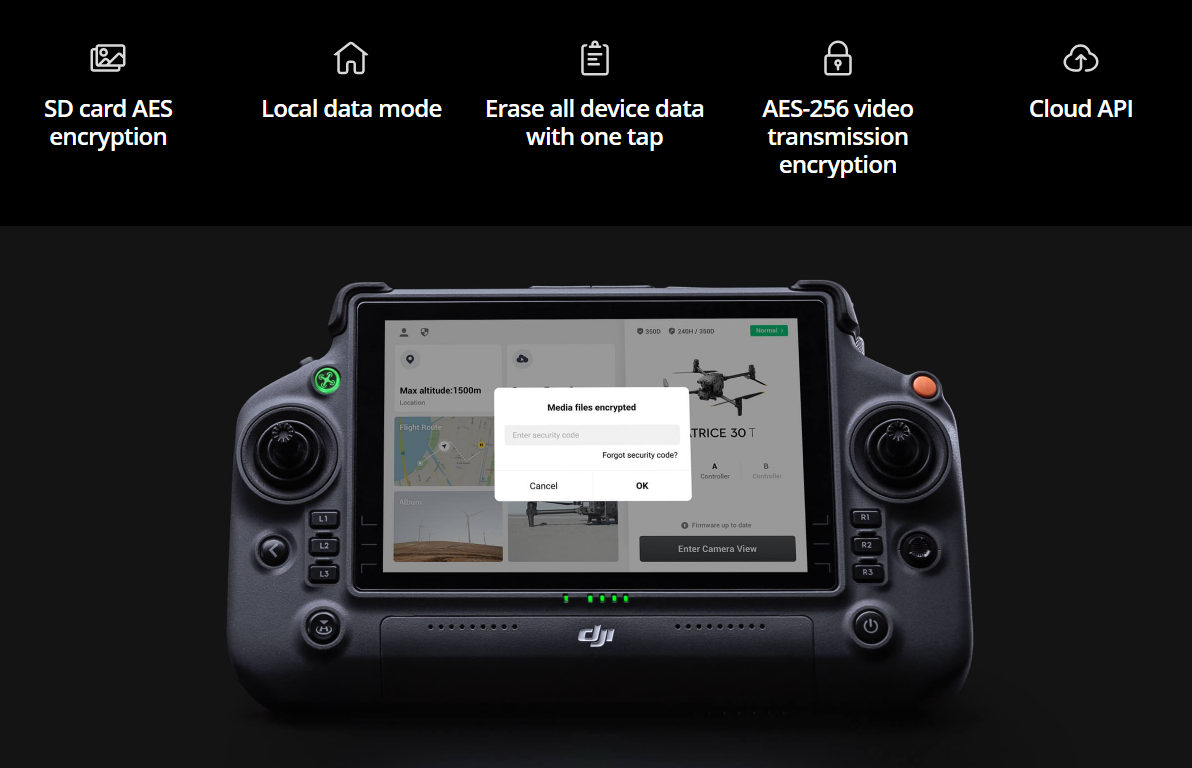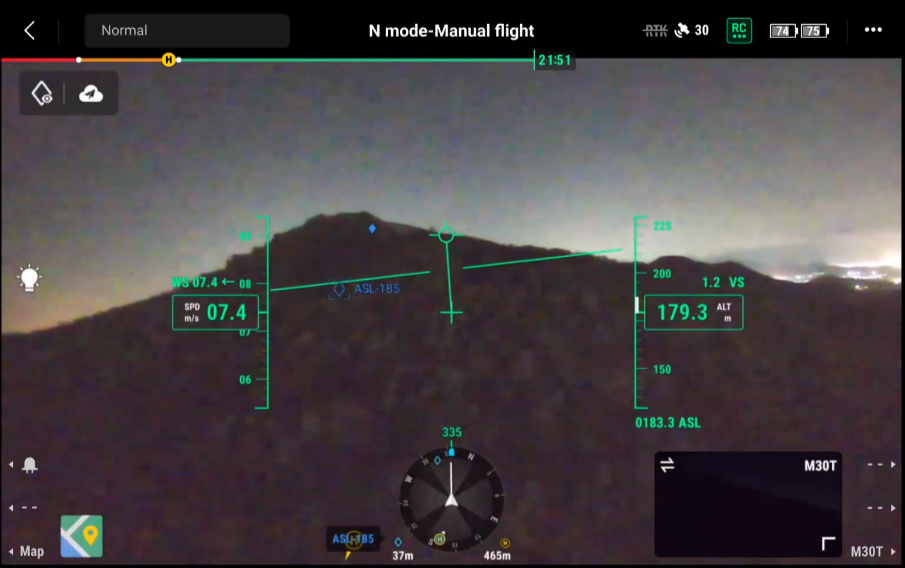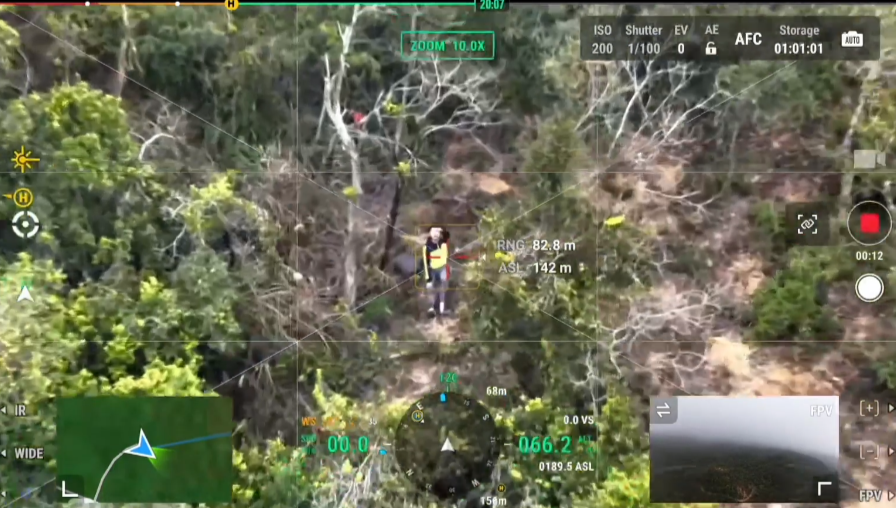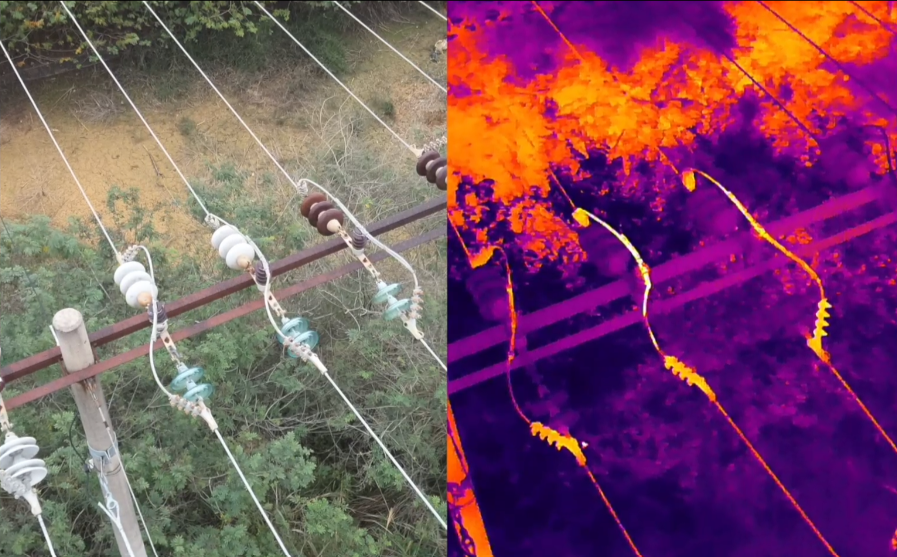DJI Matrice M30 e M30T
A balance of power and portability for greater operational efficiency.
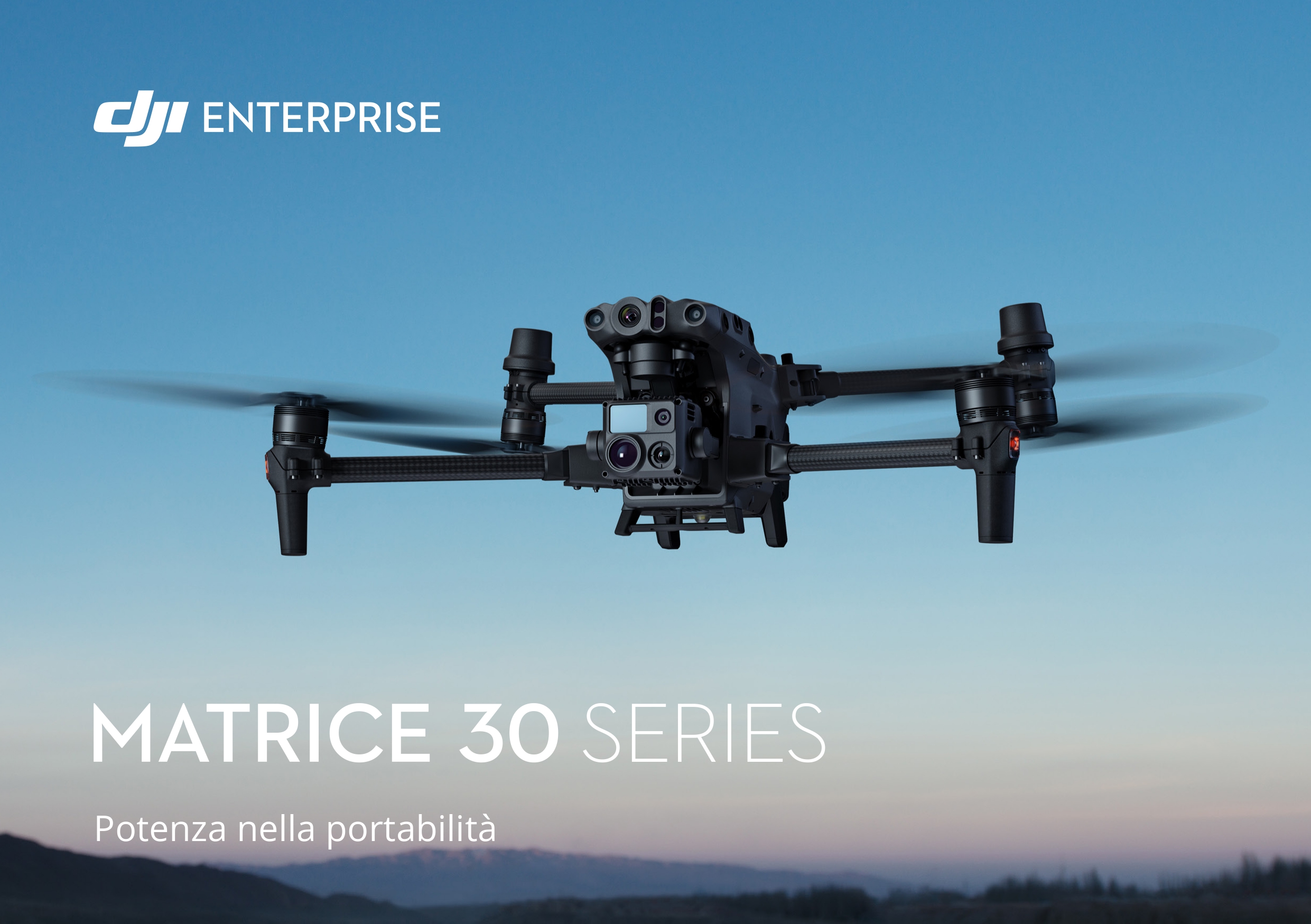
Two versions with advanced cameras
The M30 series is available in two versions, M30 and M30T. The M30 features a 48-megapixel 1/2-inch CMOS sensor camera with 5x to 16× optical zoom and 200× digital zoom, a 12-megapixel wide-angle camera, 8K and 4K photos with 30 frames per second (FPS) video resolution, and a laser rangefinder that can provide the precise coordinates of objects up to 1,200 meters away. The M30T is equipped with an additional 640×512 pixel radiometric camera.
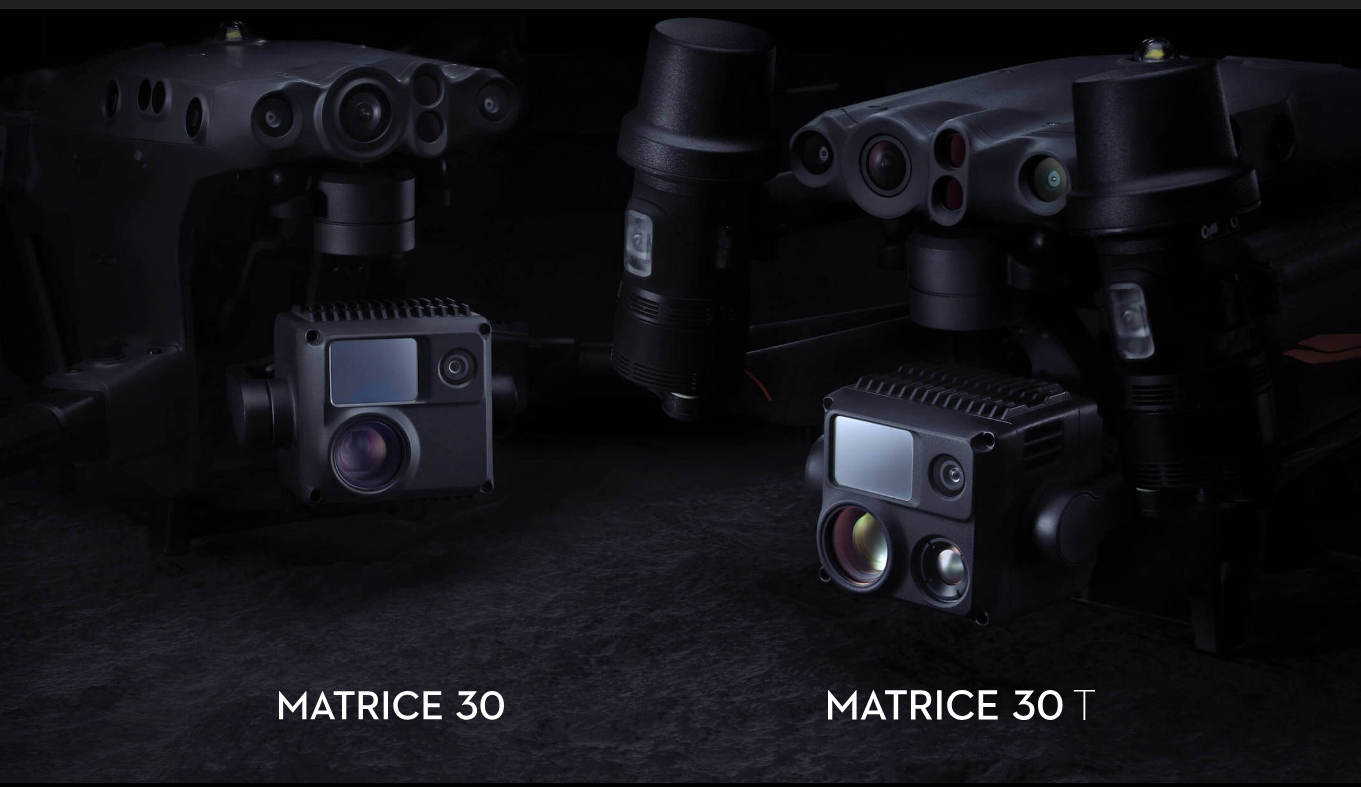
Incredible flight performance
The M30 drone is designed to withstand harsh environments, it can fly in heavy rain and wind, at high altitudes and with frost or snow conditions at extreme temperatures from -20 to 50 degrees Celsius (-4 to 122 degrees Fahrenheit). A perfect balance between power and portability has been achieved in order to achieve an unprecedented level of operational efficiency.
The flight time is 41 minutes, which means that this unit can remain in the air for a significant period of time, allowing you to cover considerable distances or perform prolonged tasks without the need for frequent charging, it is a crucial aspect that allows the unit to be efficient and perform tasks without interruption.
Maximum wind resistance was measured at 12 meters per second, which demonstrates the ability of this machine to cope with challenging weather conditions without compromising its stability or control ability.
The tangency altitude of 7,000 meters, reachable with propellers for high altitudes, is particularly advantageous for surveillance or reconnaissance missions, where it is essential to have a wide view and extended coverage using the powerful optical and digital zoom of the M30.
The maximum speed recorded is 23 meters per second, providing a remarkable speed of movement, this drone is ideal for operations that require speed of action or to quickly reach distant targets.
In summary, this extraordinary flight performance is the result of an accurate balance between power and portability. The M30 Series represents a quantum leap in operational efficiency, allowing you to tackle a wide range of tasks with ease and reliability.
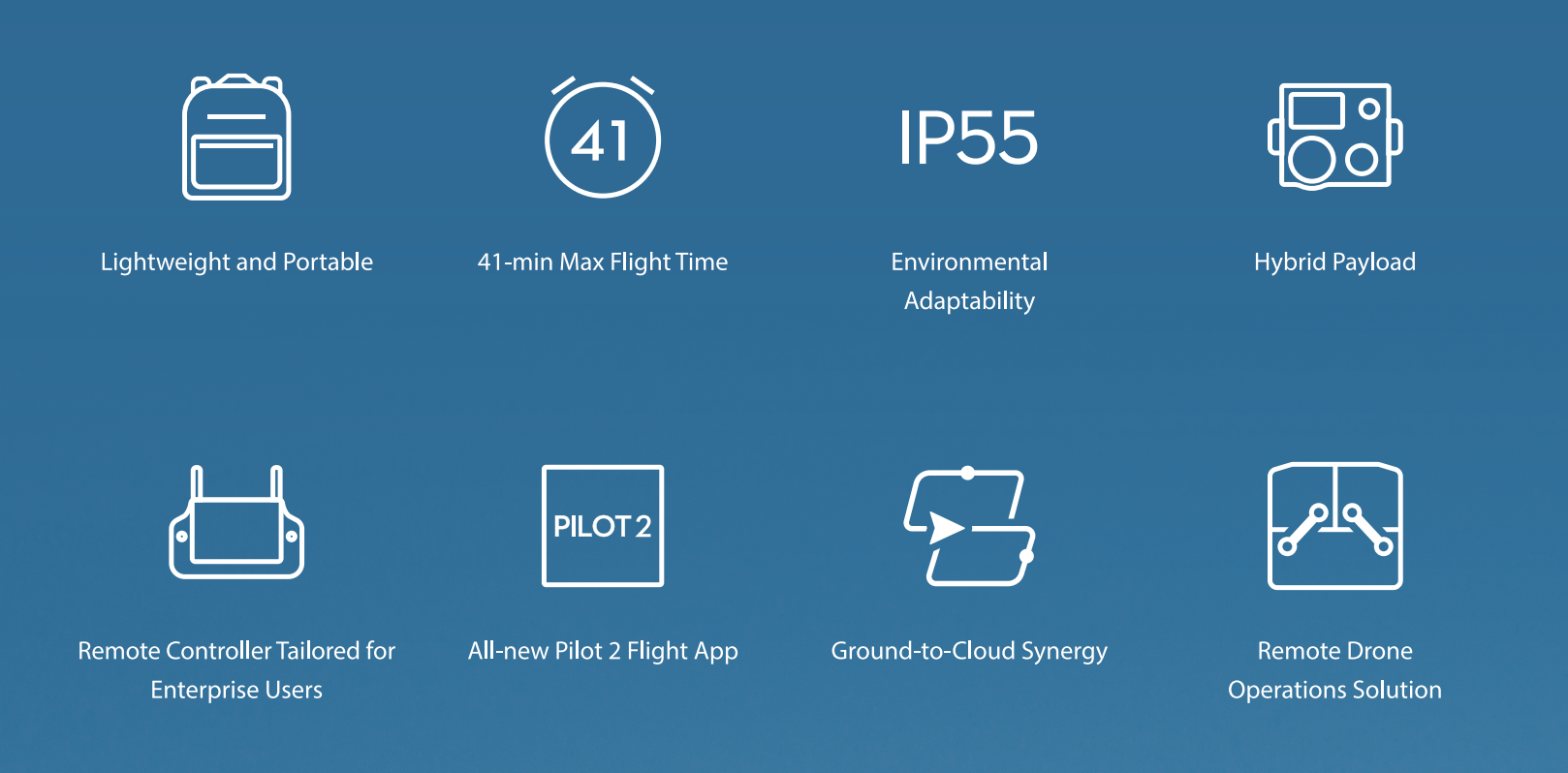
Safe and reliable
To ensure maximum safety during missions, the drone is equipped with a dual vision and ToF sensors on the 6 sides of the aircraft, supported by an integrated ADS-B receiver that provides information on the approach of any manned aircraft.
The Matrice 30 series platforms are designed with extensive system redundancies and sensors to maximize flight safety and reliability. These redundancies and safety mechanisms include: dual flight sensor control system, dual control signal links, dual intelligent batteries, dual transmission links, obstacle sensor system and three-propeller emergency landing.
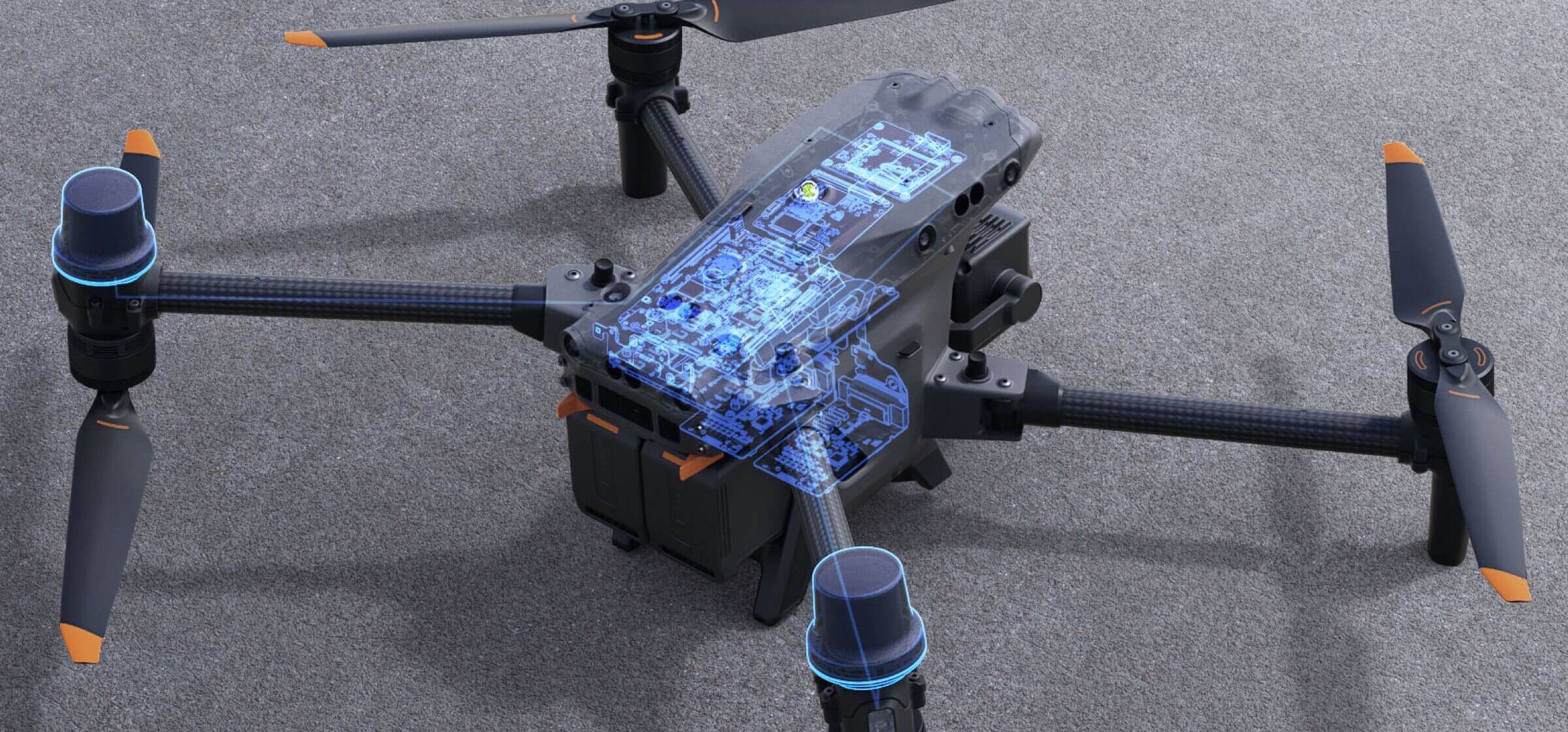
Optimized transmission
4 built-in antennas support OcuSync 3 Enterprise, which enables 1080p triple-channel video transmission and easily interchanges input feeds, even in complex environments. Support your connection also with the DJI Cellular Module, which supports stable video transmission even in complex or remote operating environments.
A key element to ensure this exceptional transmission capacity is the DJI RC Plus remote control. Designed especially for commercial drone pilots, this remote controller is equipped with a large 7-inch screen that provides a clear and detailed display.
The IP54 certification gives the remote controller protection against water and dust, ensuring reliable operation even in adverse environmental conditions. This feature is particularly useful in outdoor environments, where weather conditions can be variable and unpredictable.
In addition, the DJI RC Plus remote controller is designed to withstand a wide range of temperatures, with a range of use from -20°C to 50°C. This makes it versatile and suitable for use in hot and cold climates, allowing drone pilots to operate in different environmental conditions without compromising performance.
Thanks to the dual detachable antennas, the DJI RC Plus remote control ensures a high-quality video signal even in isolated environments. This feature is essential to ensure a stable and interference-free transmission, allowing the pilot to have a clear and detailed view during the flight.
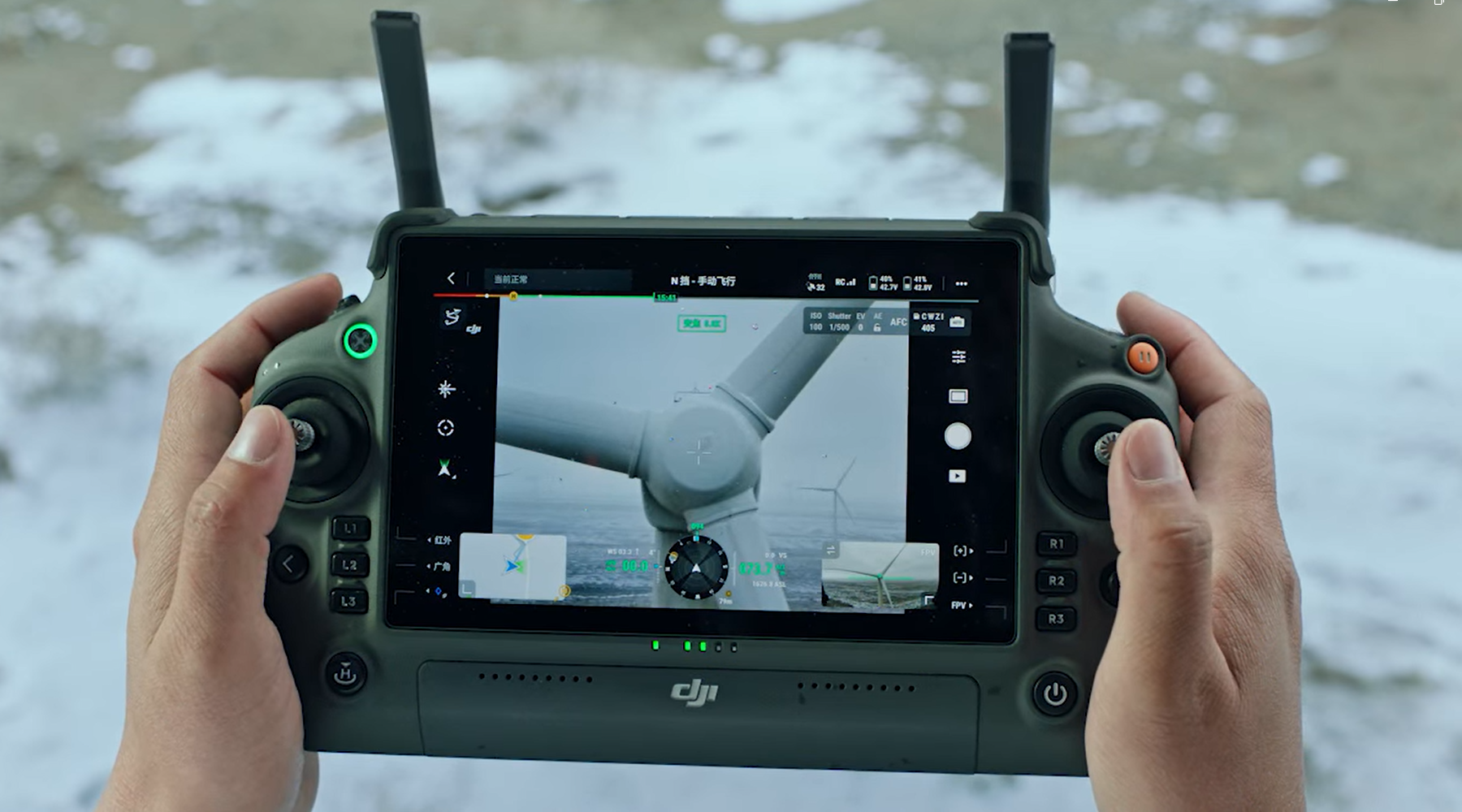
Intelligent charging station for BS30 batteries
|




